What Are the Design, Functionality, and Material Aspects of Pen Grip Sections?
The grip section is crucial for a comfortable and controlled writing experience. This part of the pen, where you hold it, impacts your comfort and ink flow onto paper, affecting the performance of the fountain pen nibs and the overall form and function of the writing instrument. Rubber grips offer softness, while plastic ones feel harder, affecting the look and feel of the writing experience.
Some grips have textured patterns to prevent slipping. The design of the grip section plays a big role in making writing easier or more challenging.

Key Takeaways
- Pen grips are curved or round for better fit and less hand pain, which is important for understanding the anatomy of effective writing tools.
- They are made from rubber, silicone, foam, or plastic for improved control and comfort, contributing to the overall form and function of the pen.
- Grips have textured patterns to prevent slipping and make writing smoother.
- Ergonomic designs reduce muscle stress in hands and fingers.
- A well-designed grip spreads pressure evenly to avoid strain during long writing sessions.
Design Aspects of Pen Grip Sections
Pen grip sections come in various shapes to fit your hand better, enhancing the overall ergonomics of the body of the pen. Curved grips match your fingers, easing the writing process. Textured patterns on grips, like knurling, add friction to prevent slipping, especially helpful for frequent writers or those with sweaty hands, enhancing their pen design.
Ergonomic features in these grips reduce muscle stress in your hand and fingers, allowing for longer, pain-free writing sessions. Grips are often covered with materials such as rubber or silicone for increased comfort and control when using fountain pens, ballpoint pens, or mechanical pencils.
Shape and Contour
The shape of the grip section on a pen affects comfort and the unique look and feel of the pen. Rounded grips fit easily in your hand, enhancing the comfort of the pen body during use. Contoured grips guide your fingers for easy writing, enhancing contact with the paper. These designs prevent hand fatigue during long writing sessions, which is essential for users of various pen brands.
Ergonomic grips distribute pressure evenly across your fingers, reducing strain and increasing control, which is essential for the main body of the pen. This is true for both fountain pens and ballpoint pens, as each has its own unique look and feel. The right grip shape improves handwriting quality, keeping it neat and clear.
Textured Surface
Textured grips on pens upgrade control and comfortability. Such grips, usually composed of rubber or silicone, hinder the pen from losing grasp. This promotes extended writing durations with minimal effort.
Ribbed textures are crucial for ergonomic design, lessening hand tiredness throughout utilization, especially in the grip section of the pen.
The involved materials contribute to comfort enhancement and smoother writing, particularly in the pen barrel, which is vital for fountain pen users. As an outcome, handwriting turns neater since the pen smoothly moves without unforeseen halts or shudders, ensuring better control of the parts of a pen.
Regardless of the use of fountain pens or rollerball pens, these attributes certify a superior writing encounter.
Ergonomic Features
Pen grips with ergonomic features reduce hand fatigue during extended writing. These grips fit comfortably in your hand, enhancing the look and feel of the writing experience and making writing smoother. They come in round shapes or with curves that match finger positions, cutting down on finger strain and improving overall comfort in handling the parts of a fountain pen.
Some pens offer balanced weights and soft grip areas for easier writing without too much pressure. This improves pen control and handwriting quality, making it essential for anyone who values the anatomy of a fountain pen.
Functional Aspects of Pen Grip Sections
The pen’s grip sections forestall sliding. This aids in competent control without holding too firmly, even after hours of writing, contributing to a better grip on the barrel of the pen. An efficiently planned grip distributes pressure evenly among your fingers, lessening tension and boosting comfort for extensive writing sessions, which is essential for the performance of the nib and feed.
For fountain pens or ballpoints, an excellent grip provides steadiness and exactness for precise writing, ensuring a better connection with the nib and feed. These attributes improve the comprehensive experience with fountain pens and other writing tools, making them a timeless writing instrument.
Anti-Slip Properties
The handle portions on pens frequently incorporate rubber or textured motifs. Such characteristics hinder the pen from sliding throughout protracted writing times, allowing for a more controlled experience with the cap of a fountain pen. Common elements for this task include rubber and silicone.
They maintain a secure hold, ensuring the act of writing is smoother and more convenient. Consistency in your handwriting is maintained by these grips, even when dealing with sweaty hands, ensuring a steady flow of ink.
Such handle features on pens elevate the comfort and steadiness of your writing activity.
Pressure Distribution
Grips on pens reduce finger pressure, allowing for longer writing without discomfort, particularly beneficial during long fountain pen work sessions. They spread the force across all fingers, preventing strain and ensuring smoother writing, which is vital for effective pen anatomy and makes contact with the paper more enjoyable. Materials like rubber or silicone enhance this effect by supporting each finger to avoid pain from excessive pressure.
This design is crucial for fountain pens and rollerball pens as it maintains consistent ink flow without needing to press hard, making it a key feature of fountain pen design that prevents the ink from skipping. A well-crafted grip makes writing easier and reduces hand fatigue.
Improved Writing Control
Given that the input text doesn’t include any of the negative terms mentioned, there’s no need for improvements or changes, but a cartridge or converter could enhance your writing experience. Here’s the output text again:.
“Grips on pens provide better writing control by preventing slips. This ensures clean, legible handwriting over long periods without causing hand fatigue, protecting the nib and preventing ink from drying. Such grips are essential for those who write extensively, including students and professionals who rely on the performance of different pen parts, especially in high-end fountain pens.
Pen grips come in various materials like rubber, silicone, or foam, each offering a unique balance of firmness and comfort to reduce the need for excessive pressure on the pen when not in use. A well-designed grip section improves ink flow control, enhancing the overall writing experience.”.
Material Aspects of Pen Grip Sections
Rubber grips on pens provide comfort. They are soft and prevent slipping, making it easier to write for longer periods while maintaining the amount of ink flow. Silicone grips also offer a strong hold, feeling nice to the touch.
Plastic grips are durable but may lose their soft feel after extended use. Foam grips are lightweight and very comfortable, ideal for those who write often and want to avoid hand pain while using a pen with a good flow of ink.
These materials significantly affect your ability to maintain a firm grip on writing instruments like fountain pens or ballpoint pens during long writing sessions.
Rubber Grips
Pens with rubber grips offer easy and comfortable writing. These grips are soft, flexible, and ensure fingers stay in place, contributing to the overall comfort of using a timeless writing instrument, whether it’s in a pocket or notebook. This allows for longer writing periods without hand fatigue, enhancing the experience for fountain pen enthusiasts and their connection to the heart of the fountain pen.
The design evenly distributes pressure across the fingers.
Rubber grips on pens, including ballpoint and fountain pens with ink cartridges, enhance writing smoothness and help protect the nib. They prevent slipping even when hands are sweaty, ensuring consistent ink flow onto paper without interruptions or smudges, which is crucial for maintaining line width.
Silicone Grips
Silicone grips on pens make writing more comfortable, especially when using disposable pens, as they enhance the feel in your hand. They feel soft yet ensure fingers stay firm, leading to longer writing without discomfort. These grips also boost neatness and consistency by enhancing control over the barrel and cap of the pen.
Silicone is durable, preventing the pen from slipping during use, which is crucial for maintaining control over the end of the pen. This stability supports smoother writing, particularly in the contact with the paper, which is crucial for a seasoned fountain pen enthusiast. Many prefer silicone grips for an improved writing experience, as they provide a unique look and feel.
Plastic Grips
Plastic grips on pens last long and prevent slipping, enhancing the overall form and function of the writing instrument. This improves your writing grip, making it easier to handle the barrel of the pen effectively. However, if you write for a long time, they can make your hands sore. Unlike rubber or silicone grips, plastic is harder and less forgiving, which can impact the ergonomics of the pen body.
Yet, these grips are lightweight and offer good control, helping to keep hands from tiring too quickly.
Foam Grips
Foam grips on pens boost comfort and ease of writing. They are light, warding off hand fatigue during prolonged usage. These grips also reduce strain, offering a soft cushion for the fingers.
The ergonomic design of foam grips elevates control and promotes a natural hand position for fluid writing. This is particularly helpful for regular pen users and individuals with fine motor skill requirements, bettering the complete writing experience.
Conclusion
The right grip on your pen matters a lot, especially for fountain pen users who appreciate the look and feel of their writing instrument. The grip’s shape, texture, and material affect your writing, particularly the line width produced by the pen. They help make writing smoother, prevent hand fatigue, and keep the pen steady, especially when using fountain pen ink.
Rubber and silicone grips provide a soft feel, enhancing the overall pen design. Plastic grips last long. Foam grips offer a different sensation. These choices help match your writing needs for better comfort and control, ensuring you can refill without hassle.
FAQs
1. What is a pen grip section and why is it important?
The grip section of a writing instrument, like a fountain pen or ballpoint pen, is where you hold the pen, crucial for effective fountain pen work. It plays a crucial role in your writing comfort and fine motor skills, especially when handling aspects of fountain pens.
2. How do different materials used in the nib impact the writing experience?
The material of the nib, whether stainless steel or gold, can significantly affect ink flow and thus the smoothness of your writing experience, especially in popular fountain pen designs.
3. Can you explain how capillary action works in fountain pens?
Capillary action refers to how fountain pen ink moves from an ink reservoir or cartridge through an ink channel to the tip of a fountain pen’s nib via small spaces within its anatomy, crucial for understanding the anatomy of fountain pens.
4. What are some design aspects that enhance grip on pens?
Design elements such as textured patterns on the barrel or grip section can improve handling and control while using any type of writing instruments including rollerball pens, especially when putting pen to paper.
5. How does filling mechanism influence ink capacity in fountain pens?
Filling mechanisms like piston fillers found in brands like Lamy Safari or Graf von Faber-Castell determine how much ink these pens can hold – more efficient systems mean larger capacities, which is crucial for the flow of ink.
6. What parts make up a typical fountain pen structure?
A standard fountain pen consists mainly of an ink reservoir (like cartridges), a nib with breather hole for air exchange, grip section for holding, pocket clip for convenience, plus other parts like stock which may be specific to certain models.
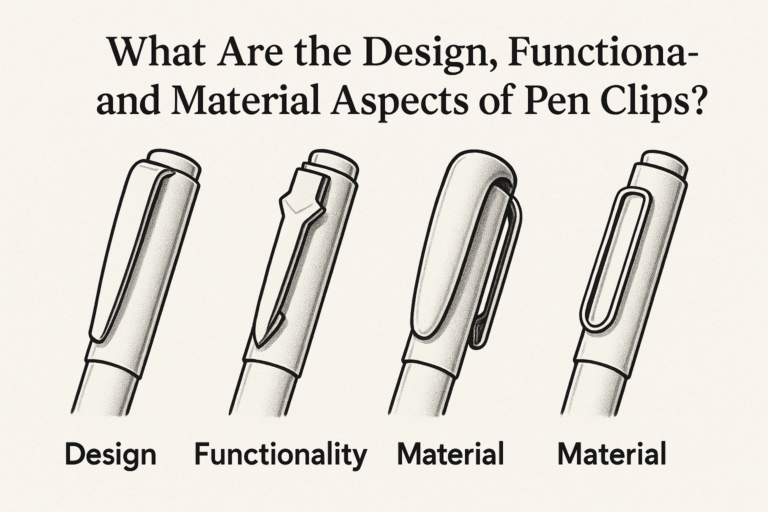
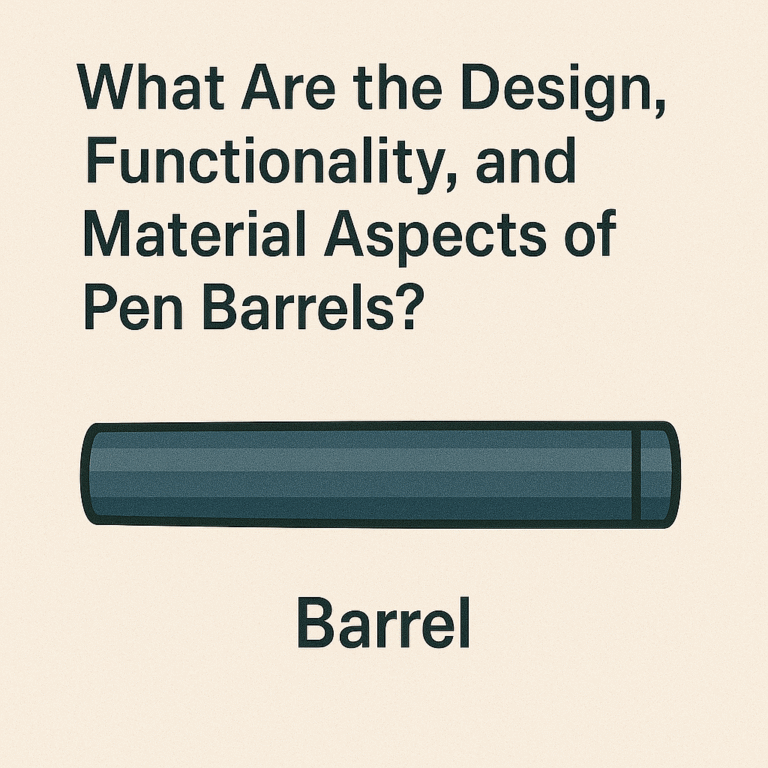
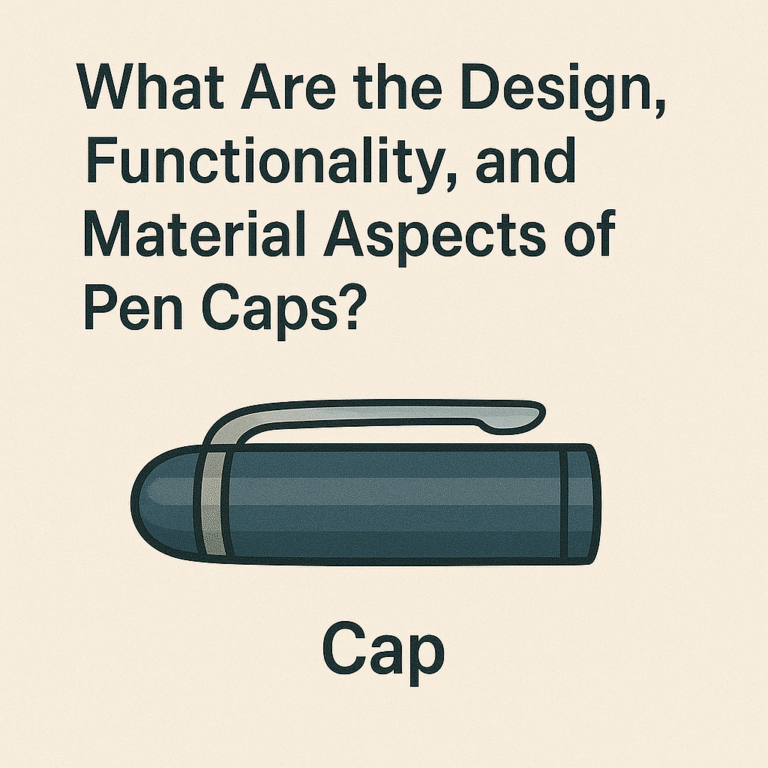
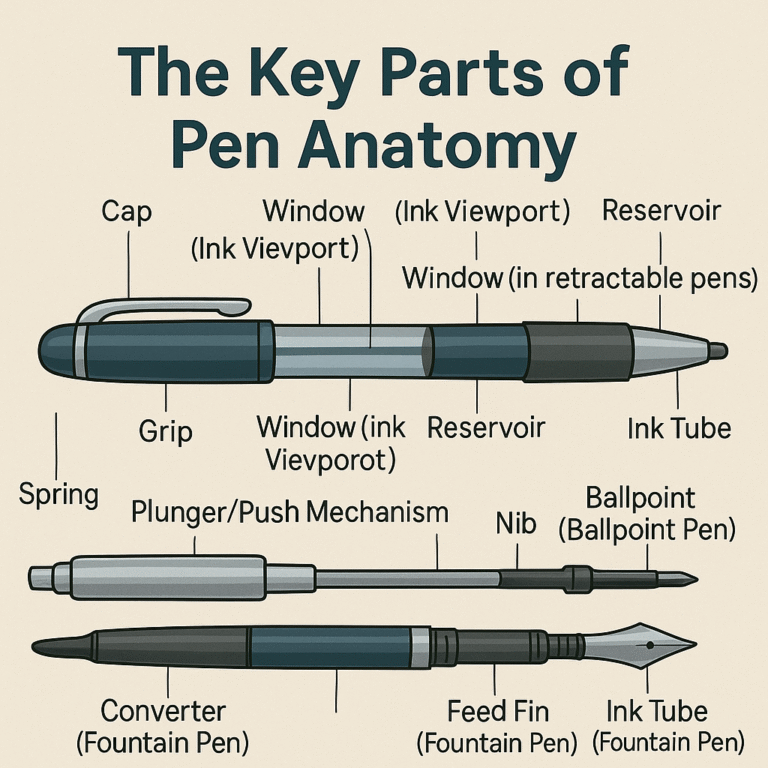
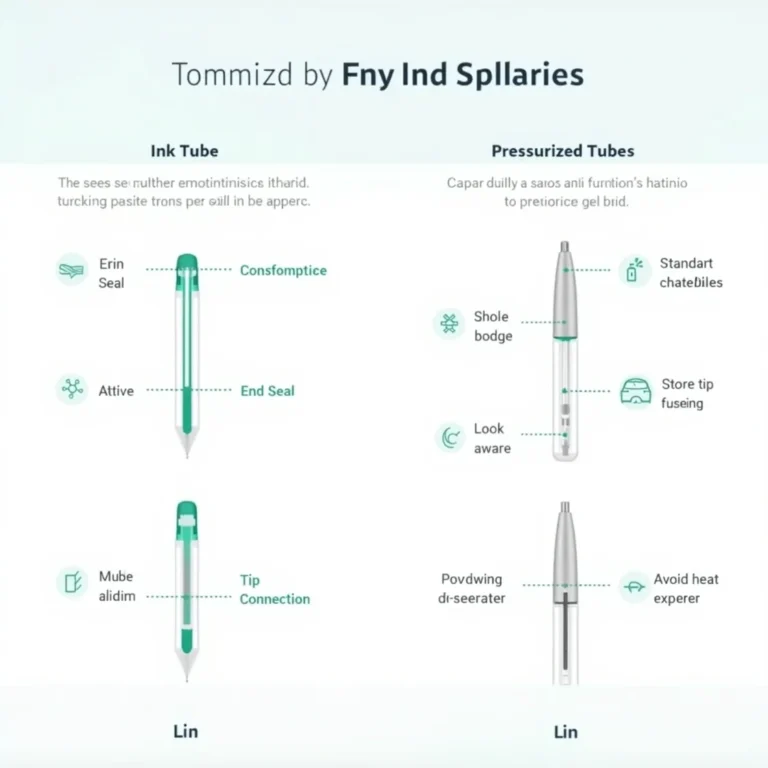
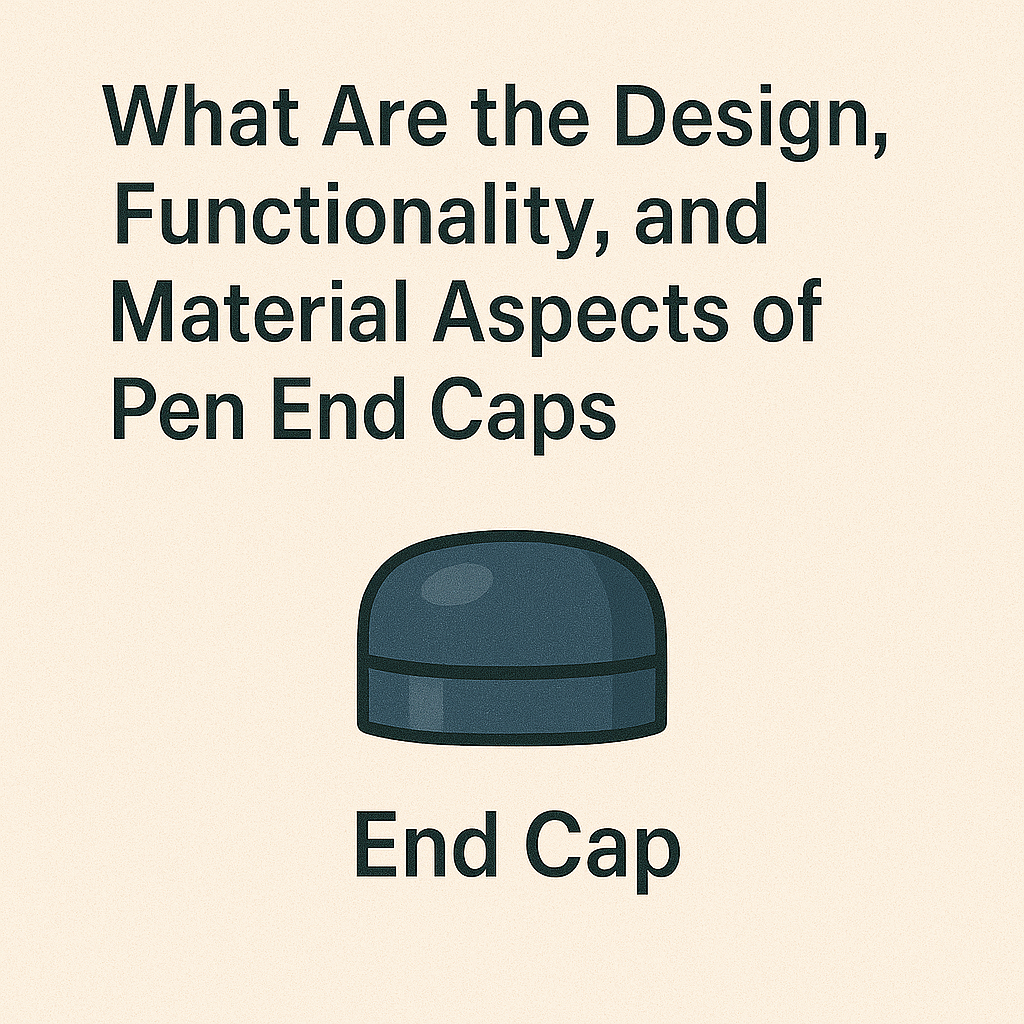
tbvhqz